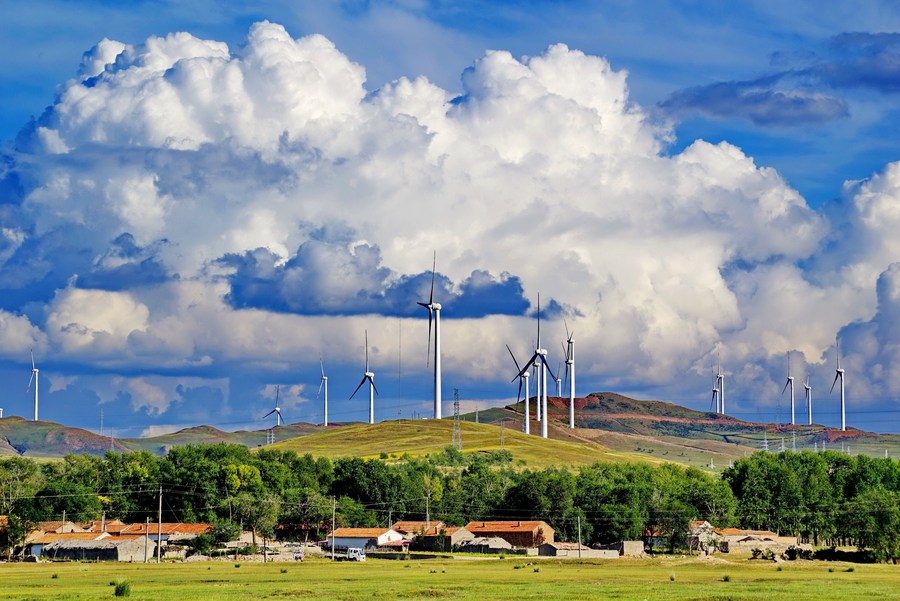
The file photo shows a wind power plant in Zhangjiakou, North China's Hebei province. [Photo/Xinhua]
China's national carbon trading market has witnessed significant growth since it was launched in July 2021, with trading volume and value both increasing substantially, according to the Ministry of Ecology and Environment.
As of July 15, about 465 million metric tons of carbon emission allowances have been traded in the market for nearly 27 billion yuan ($3.7 billion), according to a report on the market issued by the ministry at a conference in Wuhan, capital of Hubei province in Central China, on Sunday.
Carbon trading is the process of buying and selling permits to emit greenhouse gases among designated emitters. Launched in July 2021 as the largest in the world, the country's national carbon trading market currently only involves the coal-fired power generation sector.
The program imposes carbon emission limits for every unit of electricity a power plant generates. After each compliance period, coal-fired power companies can sell in the following year any carbon allowances they have left over after complying with the benchmark. If they fall short, they will have to buy allowances.
The trading volume and value in the market's 2021-22 compliance period increased by about 47 percent and 125 percent, respectively, from the first one, which lasted from 2019 to 2020, the report said.
It depicted an upward trend in trading volume and prices.
An average of almost 3.7 million tons of carbon emission allowances changed hands every month in the first half of this year, up by almost 175 percent from the same period in 2023, it said. The composite closing price in the market first exceeded 100 yuan per ton on April 24, compared with 50 to 82 yuan per ton during the second compliance period.
The market has to some extent played its role as expected in encouraging more action from enterprises to reduce their emissions, the report showed.
Compared with 2018, the carbon intensity of the country's coal-fired power generation sector — carbon emission per unit of electricity generated in the sector — in 2023 decreased by almost 2.4 percent, it said.
Addressing the Sunday conference, Huang Runqiu, minister of ecology and environment, pledged efforts to accelerate the development of the national carbon trading market, including incorporating key emitting industries such as steel, cement, and aluminum smelting into the market in a faster fashion.
Aside from enhancing the quality of carbon emission data, the ministry will gradually bring in paid allocation of emission allowances, continuously diversify the trading entities, products and methods in the market, as well as explore feasible pathways to incorporate carbon finance into the market.
These developments aim to "leverage the carbon market's role in promoting low-cost greenhouse gas emission reduction and contributing to the ultimate goal of peaking carbon dioxide emissions and realizing carbon neutrality", he said.